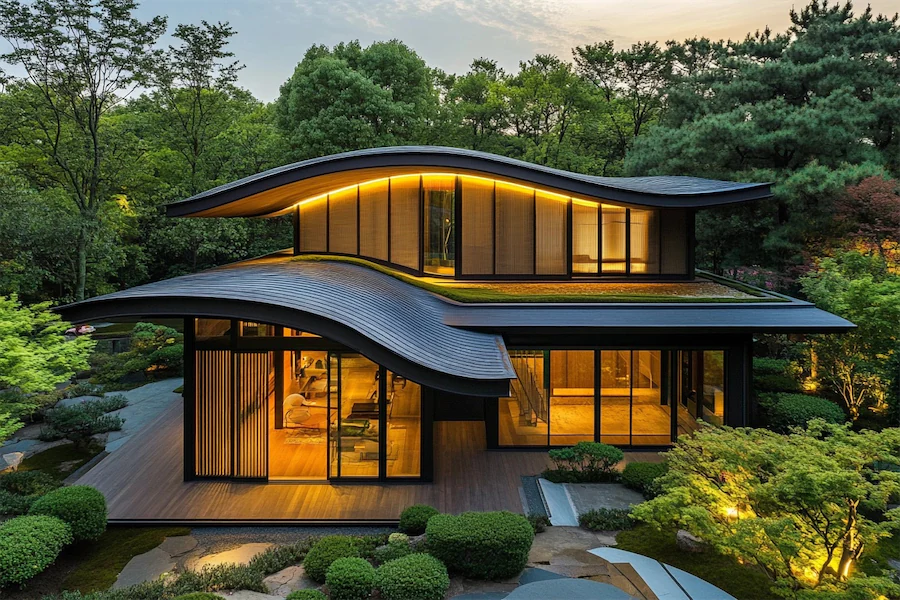Minka (民家), meaning “house of the people,” are traditional Japanese dwellings that showcase the country’s vernacular architecture. A defining feature of these homes is their distinctive roofs, which vary in design and material based on regional climates and local customs.
History and Origins of Minka Roofs
The evolution of minka roofs is deeply intertwined with Japan’s diverse climates and the availability of local materials. In regions with heavy snowfall, such as Gokayama, steeply pitched thatched roofs, known as gasshō-zukuri, were developed to prevent snow accumulation. Conversely, in areas with milder climates, minka featured gentler slopes and utilized materials like wood shingles or tiles. These architectural adaptations ensured durability and comfort for inhabitants across different environments.
Key Features of Minka Roofs
Minka roofs are characterized by their structural complexity and aesthetic appeal. Common designs include:
- Kirizuma (切妻): A simple gabled roof with two sloping sides forming a triangular gable at each end.
- Yosemune (寄棟): A hipped roof with four sloping sides, eliminating gables and providing a uniform appearance.
- Irimoya (入母屋): A combination of gabled and hipped roofs, featuring a gable at the top transitioning into a hipped roof lower down.
The choice of roofing material—be it thatch, wood shingles, or tiles—was influenced by local resources and climatic considerations. Thatch provided excellent insulation, while tiles offered greater fire resistance.
Applications of Minka Roofs
Beyond their primary function of shelter, minka roofs played significant roles in the daily lives of residents:
- Agricultural Utility: The spacious attics beneath steep thatched roofs were often used for storing crops and tools, and in sericulture regions, for raising silkworms.
- Community Symbolism: The design and craftsmanship of a minka roof often reflected the status and wealth of the household, serving as a symbol of pride within the community.
Considerations When Choosing Minka Roofs
When selecting or restoring a minka roof, several factors should be considered:
- Climate Adaptation: Ensuring the roof design suits local weather patterns is crucial for longevity and efficiency.
- Material Availability: Utilizing locally sourced materials not only maintains authenticity but also supports environmental sustainability.
- Maintenance Requirements: Traditional materials like thatch require periodic upkeep, including rethatching every few decades, which can be labor-intensive and costly.
Conclusion
The roofs of Japanese minka are more than mere architectural elements; they encapsulate the harmonious relationship between human habitation and the natural environment. By thoughtfully considering design, material, and function, minka roofs continue to stand as enduring symbols of Japan’s rich cultural heritage.
